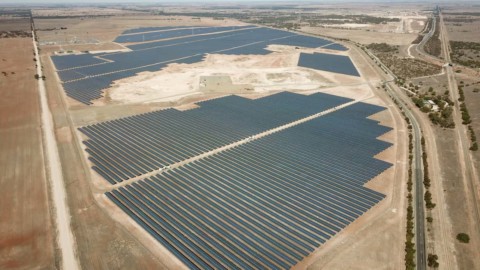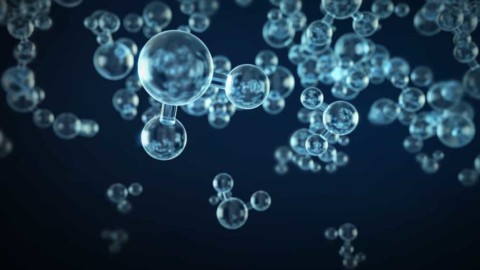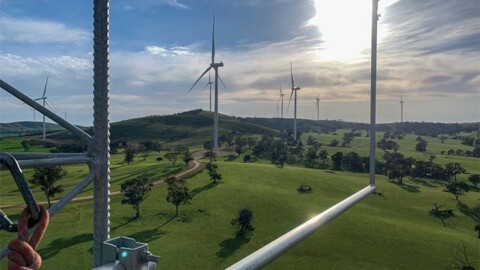The Australian Renewable Energy Agency (ARENA), will provide up to $2.7 million for Stanwell’s $10.4 million feasibility study into a large-scale hydrogen export project in Gladstone, Queensland.
A key challenge of producing cost-competitive green hydrogen by electrolysis is the high capital costs of equipment. Large export-scale projects have the potential to improve cost competitiveness due to economies of scale.
The study, delivered in partnership with Japan’s largest hydrogen supplier Iwatani Corporation, will investigate the feasibility of developing a hydrogen production facility capable of producing up to 36,500 tonnes per annum of renewable hydrogen and export to Japan from 2026.
Stanwell and Iwatani’s long term plan is to scale up to 328,500 tonnes per annum in 2031 to meet forecast Japanese demand. Stanwell proposes to ship hydrogen in liquid form utilising liquid hydrogen shipping vessels.
Developing QLD’s renewable hydrogen industry
Stanwell Acting CEO, Adam Aspinall, said Stanwell welcomed the opportunity to work alongside some of the industry’s best on the development of Central Queensland’s large-scale renewable hydrogen industry.
“Stanwell is excited to be leading the development of Queensland’s next big industry. We believe hydrogen has an important role to play in supporting electricity security and reliability and reinforcing renewable energy integration and investment in Queensland,” Mr Aspinall said.
“While there’s still a way to go for hydrogen to be commercial, collaboration with key partners across all parts of the supply chain is critical to helping drive down the cost of hydrogen technologies and supporting the development of the industry.
“The idea that Queensland’s very own energy generators and ports could play a key role in meeting global hydrogen demand, as well as supply local industry, is exciting.”
Forging international partnerships
The $10.4 million study is also supported by investment from a broader consortium of Japanese and domestic partners including Kansai Electric Power Corporation, Marubeni Corporation, Kawasaki Heavy Industries and APA Group, and funding support from the Japanese Ministry of Economy, Trade and Industry.
Australia holds a competitive advantage in the emerging hydrogen export market due to its existing expertise and infrastructure in energy export supply chains, proximity to key emerging hydrogen import markets in Asia with established trade relationships, and an abundance of renewable energy resources.
Since the release of Australia’s National Hydrogen Strategy by the Council of Australian Government’s (COAG) Energy Council in November 2019, the Federal Government said it has been advancing international collaborations, undertaking national coordination and supporting priority industry projects to grow a clean, innovative, safe and competitive hydrogen industry.
In January 2020, the Australian and Japanese Governments signed a Joint Statement of Cooperation on Hydrogen and Fuel Cells. In June 2021, the governments also announced the Japan-Australia Partnership on Decarbonisation through Technology, recognising their shared ambition to accelerate the development and commercialisation of low and zero emissions technologies, including clean hydrogen.
The study exemplifies the ongoing collaboration and exploration of emerging hydrogen trade opportunities.
Hydrogen export potential
ARENA CEO, Darren Miller, said the project represents an opportunity to investigate the potential of Australia becoming a significant exporter of renewable hydrogen.
“Stanwell’s study presents a significant opportunity to accelerate the development of export opportunities for renewable hydrogen in Australia and to work with a highly credible consortium from Japan that has the potential to deliver a large-scale export project.
“Australia’s vast solar and wind resources and our proven ability to export energy products mean we are well placed to build a large-scale competitive hydrogen export industry in the future.
“Feasibility studies like this are a necessary and crucial step to build the case to attract the finance required for large impactful projects.”
The project is expected to create more than 5,000 new jobs and $4.2 billion in hydrogen exports. The facility would also supply local businesses with clean energy, helping energy-intensive heavy industries across Queensland to lower their carbon footprints.
Federal Minister for Energy and Emissions Reduction, Angus Taylor, said the project was another important step in establishing a hydrogen supply chain with Japan, where there is strong demand for Australia’s clean energy.
“We want Australia to be a hydrogen global powerhouse and projects like this are critical to growing demand for Australian hydrogen and industry development,” Mr Taylor said.
“This project demonstrates the importance of government, industry and international partners working together to accelerate the development of low emissions technologies.
“The Morrison Government is committed to developing export and domestic supply chains, establishing hydrogen hubs and backing projects that build domestic demand for hydrogen. Gladstone is an ideal location to help deliver this.”
















